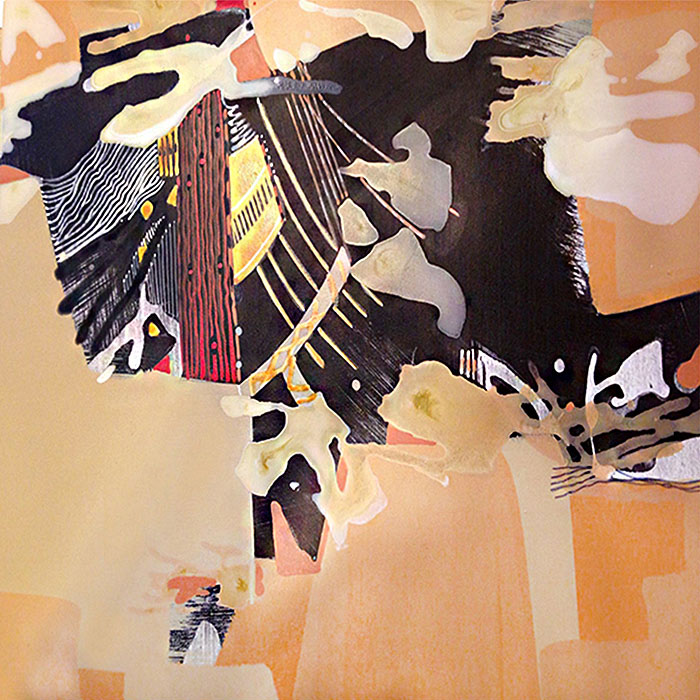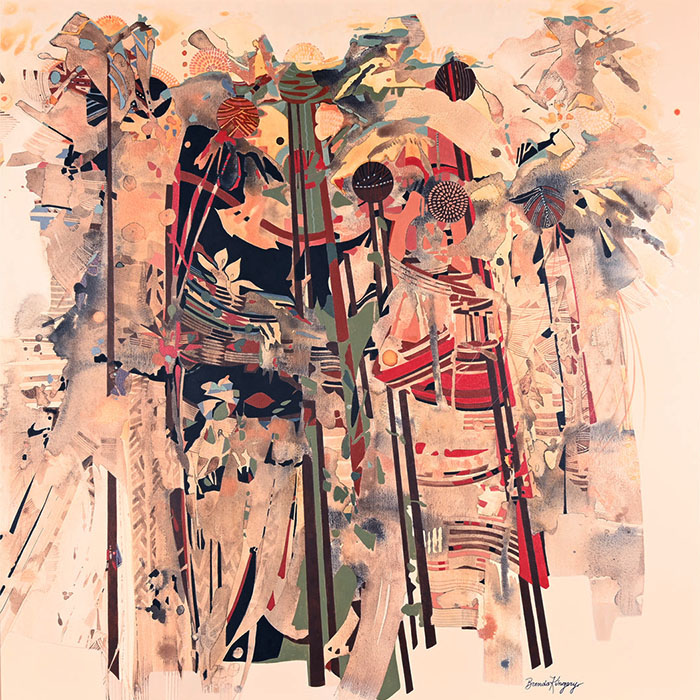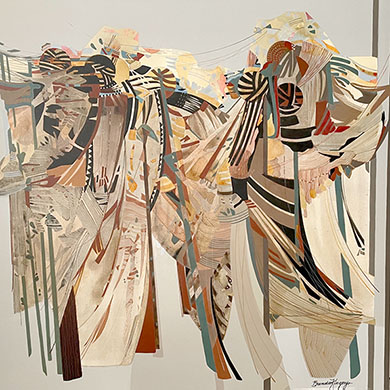Paintings

This small painting is the story of a Polish Prince. The title of this play as well as the story is "Life Is a Dream." The play was originally written in 1635 by Pedro Calderón de la Barca, who was from Spain. The theme of the play is conflict between free will and fate. Historically the Ottoman Empire was close to the border of Spain. Gold from the "New World" could finance the war. This is the mystery of life: how we dream. The conflicts between our dreams and our fate. The mystery of life. There's a beautiful reflection at the end of Act III which ends:
And even dreams themselves
Are dreams."
The New World is mine.
Nine of us, all Chickasaw artists, had last come from a successful exhibition at the Mississippi Museum of Art in Jackson. We decided to travel on to Tupelo. Tupelo is a homeland for Chickasaws. We traveled to Tupelo and the surrounding area to honor our cultural history and give strength to our futures.
I also went myself to visit the place my Great Grandfather had lived in the 1730s. Grandfather was a leader in the Chickasaw tribal nation. He lived through the beginning of a new nation and the decline of his own. Removal was a part of his story, our historical memory. We visited the mounds that are reminders of our cultural heritage. While at the mounds, we respectfully said our prayers of gratitude. We thanked those who paved the way for our present Chickasaw Nation. We prayed and sent our Sky Messages. I painted blue to signify blessings.
The Copper Faces are ancient ancestors: Chickasaws and Choctaws. I painted our migration story in narrative symbolism. Our ancient prophets advised us to move from the west to better land with water and trees. We were advised to take with us a sacred pole that would lead us in the right direction. The sacred Itti' Fabassa' Holitto'pa'. We were also guided and protected by our creator Aba'Binni'li who created all things and sat above the clouds and directed our destiny.
We had a beloved white dog who traveled with us until the time we reached the Mississippi River. At that time, the Chickasaws and Chocktaws argued and separated into two nations. The Chickasaws continued and crossed the river. The white dog was lost during the crossing. We settled in the area now called Tupelo. The sacred pole settled and the Chickasaws found their new homeland.

The circles here represent faces. Sometimes the circles can be daydreams or silver. In the painting I've used photographs my husband and I took during visits to the red earth Pow Wow in Oklahoma.
During the grand entry, Tribes dance the circle possession. The varied regalia change and move as the dancers are introduced. My paintings capture the regalia in pieces as they move. Colors combine and collide. The poles are references to the Chickasaw Migration theme. They might also be the poles used as banners by Samurai Warriors or the staff of the Good Shepard. They tell visually about protection, leading and following.
In this painting the Pow Wow is outside in the trees. I am dreaming of the Chickasaw arbors where I can sit and watch the stomp dancers' colors mix and overlap like weaving a belt, or sewing on a ribbon. I see a turban and maybe some feathers. Like a weaving, I layer the paint, sometime up to 25 thin layers. I will paint thin lines as in a tapestry.

Brenda Kingery was raised in Oklahoma and is of Chickasaw and Anglo Descent. Kingery is a contemporary artist and refers to her experiences while living or working in Japan, in Uganda, or at Pow Wows in Oklahoma as subjects of her work.
Kingery's travels led her to complete an MA in Fine Arts and Art History at the University of Oklahoma, writing a thesis on Ryukyuan Folk Art. Her postgraduate studies in Fine Arts were completed at Ryukyu Daigaku University in Okinawa, Japan, plus graduate studies in Chinese language at Texas Tech. She later taught Art History at San Antonio College before starting her career as a full-time artist. Kingery's paintings have been described as Narrative Symbolism. Beginning with thin acrylic washes, the next stage in the process may take as many as 25 layers of thin, hand painted lines and more layers of washes that define the composition.
Brenda Kingery is a member of the Board of Trustees of the Institute of American Indian and Alaska Native Culture and Arts Development, which is an appointment by the President of the United States.

